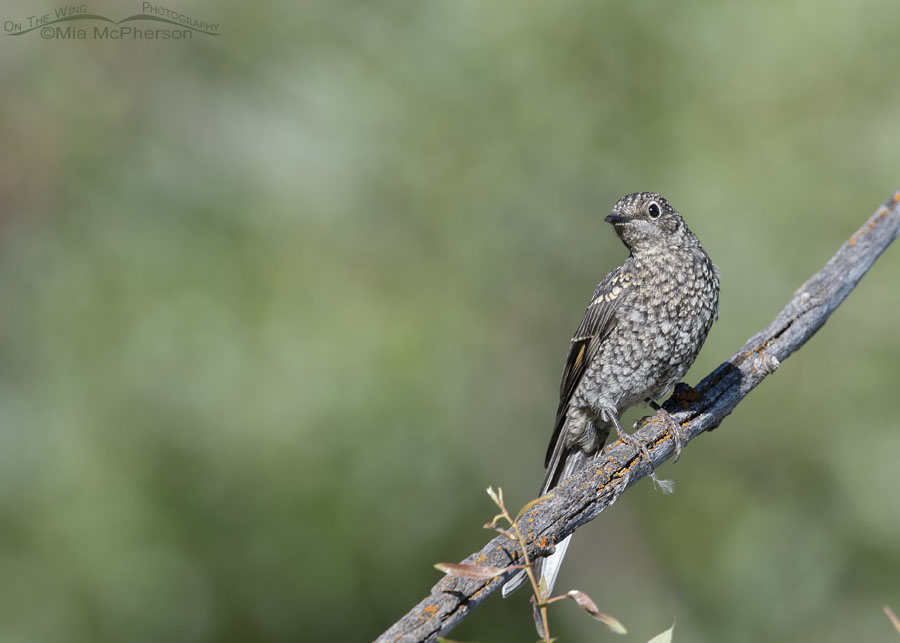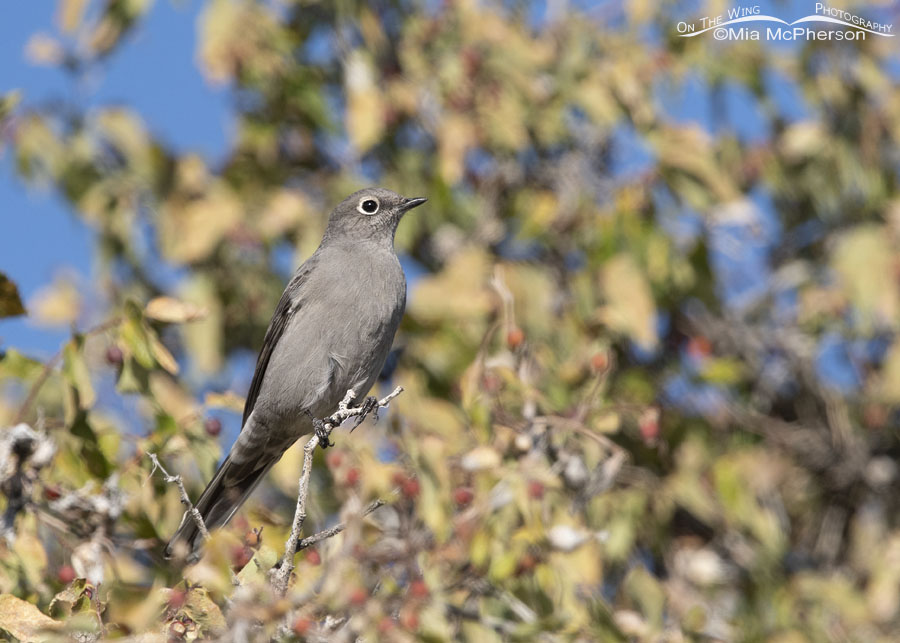
Immature Townsend’s Solitaire high up in the Wasatch Mountains – Nikon D500, f7.1, 1/800, ISO 500, +0.3 EV, Nikkor 500mm VR with 1.4x TC, natural light
My recent solo trips to the West Desert have refreshed me and given me a sense of peace plus I’ve enjoyed the songs and calls of the birds I have listened to in the quietness of the mountain canyons.
Although I do rely on my eyes heavily when I am locating birds I don’t find them using my eyes alone. I also use my ears. If I can hear the birds I can find them. Sometimes a single note is all I need to identify a hidden bird.
Anyone who has ridden with me out in the field has heard me saying the names of the birds I am hearing out loud then I point them out after I locate them with my eyes.
Lately I have been hearing a single note call I’ve missed hearing throughout the breeding season because the birds that make that call are often up higher in the mountains when they are nesting than they are at this time of the year. The call of Townsend’s Solitaires.
This year I was able to take my first photographs of a juvenile Townsend’s Solitaire high up in the Wasatch Mountains. By this time of the year the hatch year solitaire’s won’t look at all like the photo above. They will look more like the adults.

Adult Townsend’s Solitaire perched in a Netleaf Hackberry – Nikon D500, f7.1, 1/1600, ISO 500, Nikkor 500mm VR with 1.4x TC, natural light
I’ve had my share of problems getting the photos I desire of adult Townsend’s Solitaires.
I’d love to photograph them with firs and junipers in the background because I believe the greens of those trees would compliment the soft gray plumage of solitaires better than plain blue sky. Sometimes when I find them they are in a messy setting that doesn’t show off their subtle beauty. See the photo above.
I took this video two days ago to record the single note call of a Townsend’s Solitaire that I was hearing in a mountain canyon. You may need to turn your volume up to hear it clearly because this recording and the one below are not amplified.
The “whee” call is the call I mentioned above that I don’t hear during the breeding season because Townsend’s Solitaires usually nest higher up in the mountains than I can get when using my Jeep or other vehicle as a mobile blind.
At this time of the year the Townsend’s Solitaires are moving down in altitude to establish their winter feeding territories in the junipers that dot slopes of the mountains which is why I’ve started hearing them again. That one note call delights me.
And Townsend’s Solitaires can sing. Oh, do they sing. I adore hearing them and one of Townsend’s Solitaires started singing right after the first video I shared so I decided to record its song to share here too.
Side note: At the 6 to 8 second mark of this video I recorded a call I didn’t recognize and with help I was able to identify the whirring call I heard as the call of a Clark’s Nutcracker. I guess I’d never heard them make that sound before but from now on I will instantly know that call.
The long, clear, warbled notes that can be heard in this video is the song of a Townsend’s Solitaire.
By the way, the Townsend’s Solitaire I recorded calling and singing was across the creek you can hear in the background of these videos and didn’t come out into the open for me to photograph it. Another time perhaps.
Sorry for the terrible vertical presentation of these cell phone videos. When I do more I will remember to take them in a horizontal format and to use my Nikon D810 which seems to pick up sounds better than my phone.
I know where in the mountains to find Townsend’s Solitaires by seeing them, hearing them and by knowing their preferred habitat. What I need to do to take better photos of them is to sit quietly, be patient and wait for them to come in.
Life is good.
Mia
Click here to see more of my Townsend’s Solitaire photos plus facts and information about this species.


Huge thanks.
My eyes are not good, but my hearing is and that call enchanted me. And thank you for also identifying the ‘mystery’ singer
Great shots, and yes I had to turn my volume up! Many thanks!!